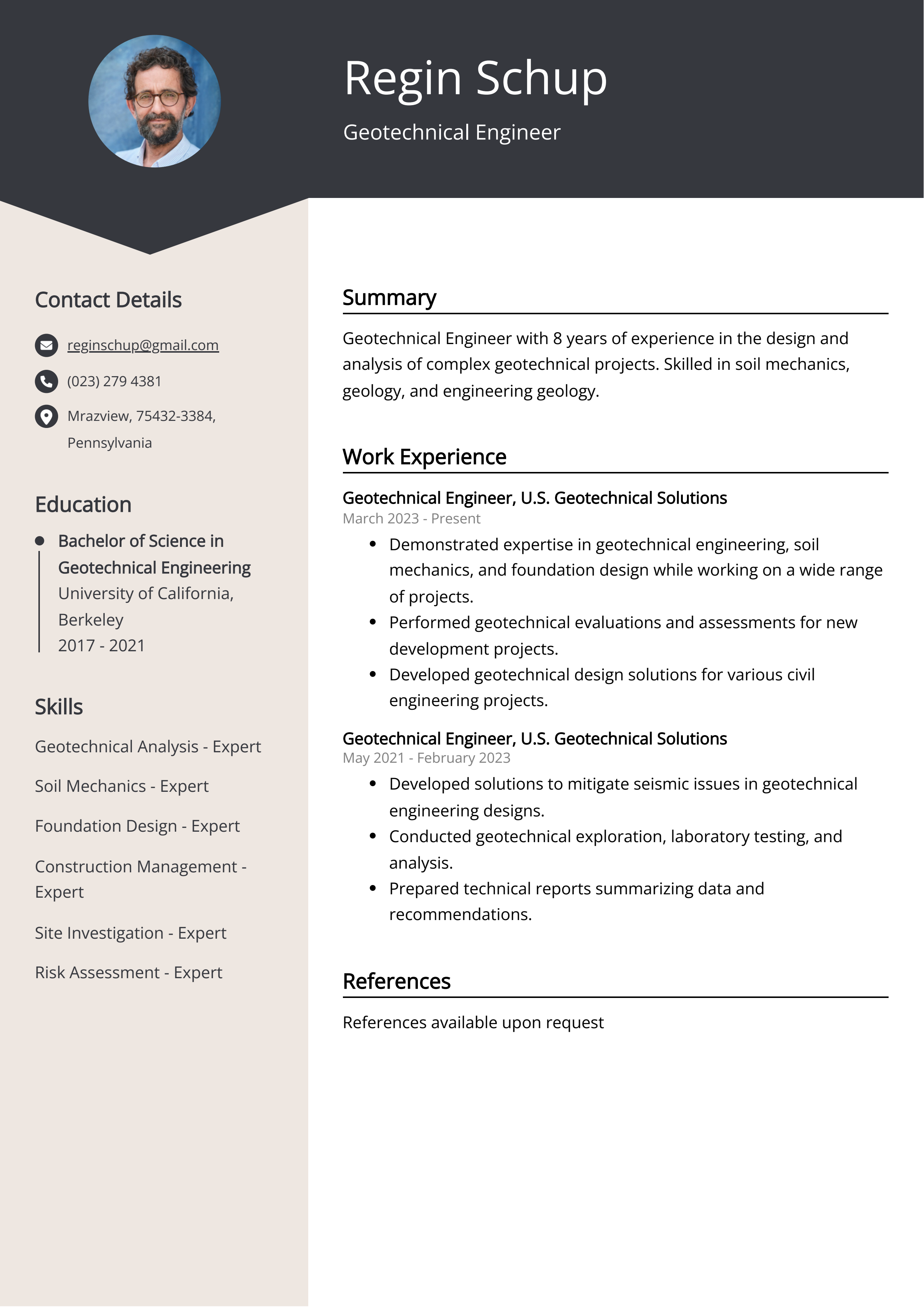The Only Guide to Geotheta
The Only Guide to Geotheta
Blog Article
The Definitive Guide for Geotheta
Table of ContentsGeotheta Fundamentals ExplainedThe Best Strategy To Use For GeothetaOur Geotheta DiariesThings about GeothetaThe Main Principles Of Geotheta

They carry out site investigations, collect samples, carry out research laboratory examinations, and analyze data to examine the viability of the ground for building and construction projects - Geo Tech Engineering. Based on their findings, geotechnical engineers offer recommendations for foundation style, slope security, keeping structures, and mitigation of geotechnical risks. They collaborate with other experts, such as engineers, structural engineers, and building groups, to make certain that geotechnical factors to consider are integrated right into the general job style and application
By examining the actions and homes of dirt and rock, they can identify potential geotechnical threats such as landslides, soil settlement, or slope instability. Their knowledge aids stop failings or crashes that could endanger lives and building. Here are some in-depth duties and duties of a geotechnical designer: Site Examination: Geotechnical engineers conduct website investigations to gather data on subsurface problems.
They analyze the data to understand the buildings and habits of the dirt and rock, including their toughness, permeability, compaction attributes, and groundwater problems. Geotechnical Evaluation and Style: Geotechnical engineers analyze the information gathered during website examinations to analyze the stability and viability of the website for building and construction projects. They do geotechnical estimations and modeling to assess aspects such as birthing ability, negotiation, incline stability, lateral earth pressures, and groundwater flow.
Examine This Report on Geotheta
Structure Design: Geotechnical engineers play a crucial role in creating foundations that can safely support the designated framework. They assess the dirt problems and load demands to determine the ideal foundation kind, such as shallow structures (e.g., footings), deep foundations (e.g (https://soundcloud.com/geotheta)., heaps), or specialized strategies like dirt improvement. They consider variables such as negotiation limits, bearing capability, and soil-structure interaction to establish optimum foundation styles
They assess building plans, display website activities, and carry out field evaluations to validate that the style suggestions are complied with. If unexpected geotechnical concerns arise, they evaluate the scenario and give suggestions for remediation or modifications to the design. Threat Assessment and Reduction: Geotechnical engineers evaluate geotechnical threats and threats related to the project site, such as landslides, liquefaction, or soil disintegration.

Cooperation and Communication: Geotechnical designers function closely with various other experts associated with a task, such as engineers, structural engineers, and building teams. Efficient communication and collaboration are important to incorporate geotechnical factors to consider into the overall task layout and building procedure. Geotechnical engineers give technological expertise, solution questions, and make sure that geotechnical demands are satisfied.
The 7-Minute Rule for Geotheta
Right here are some types of geotechnical designers: Structure Engineer: Structure designers concentrate on creating and examining structures for frameworks. They examine the dirt problems, lots demands, and website characteristics to establish the most suitable foundation type and style, such as shallow foundations, deep foundations, or specialized methods like heap structures.
They evaluate the variables affecting incline security, such as soil buildings, groundwater problems, and slope geometry, and establish approaches to stop incline failures and mitigate risks. Quake Engineer: Earthquake designers focus on analyzing and developing structures to hold up against seismic forces. They evaluate the seismic risk of a website, examine soil liquefaction potential, and create seismic layout requirements to make sure the security and resilience of structures throughout earthquakes.
They do area testing, accumulate examples, and analyze the gathered data to characterize the dirt residential properties, geologic developments, and groundwater problems at a website. Geotechnical Instrumentation Engineer: Geotechnical instrumentation engineers concentrate on tracking and determining the actions of dirt, rock, and structures. They mount and maintain instrumentation systems that monitor variables such as soil negotiation, groundwater degrees, slope activities, and architectural displacements to examine efficiency and supply early cautions of possible issues.
What Does Geotheta Do?
They perform tests such as triaxial tests, combination examinations, straight shear examinations, and leaks in the structure tests to collect information for geotechnical evaluation and layout. Geosynthetics Designer: Geosynthetics designers focus on the style and application of geosynthetic materials, such as geotextiles, geogrids, and geomembranes. They make use of these materials to boost dirt stability, reinforce slopes, give water drainage remedies, and control erosion.
They tend to be investigatory individuals, which means they're intellectual, introspective, and analytical. They are interested, systematic, rational, logical, and sensible. Several of them are likewise social, indicating they're kind, charitable, participating, patient, caring, helpful, understanding, skillful, and friendly. Does this seem like you? Take our complimentary career test to discover if geotechnical engineer is among your top career suits.
In the office environment, geotechnical engineers make use of specialized software devices to execute calculations, produce layouts, and evaluate information. They prepare records, review project specifications, interact with customers and employee, and coordinate project activities. The office setting offers a helpful environment for study, analysis, and cooperation with other professionals entailed in the task.
The 6-Second Trick For Geotheta
They often check out job websites to carry out website examinations, evaluate geotechnical problems, and gather information for evaluation. These sees involve taking a trip to different locations, often in remote or tough terrains. Geotechnical designers might perform soil sampling, conduct tests, and display construction activities to guarantee that the geotechnical aspects of the project are being executed appropriately.
Geotechnical designers likewise function in specialized geotechnical research laboratories. Geotechnical lab designers work thoroughly in these atmospheres, managing testing tools, running instruments, and taping data.
Report this page